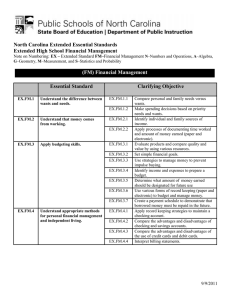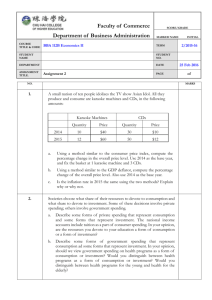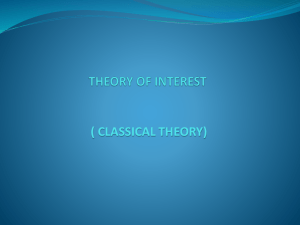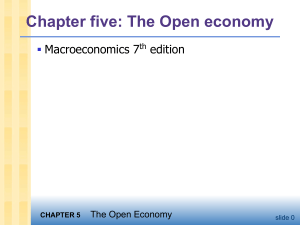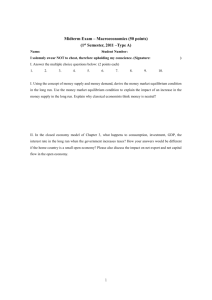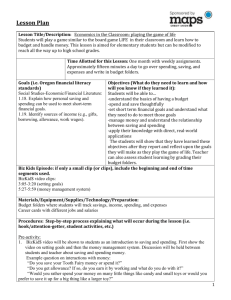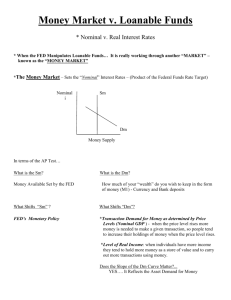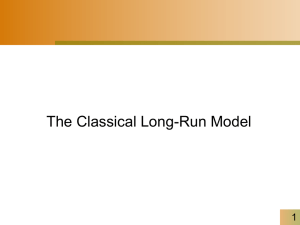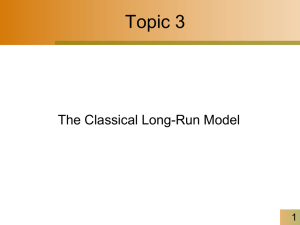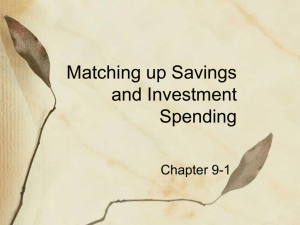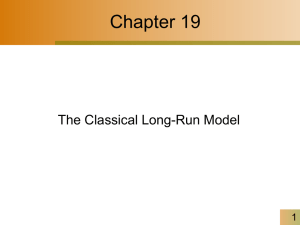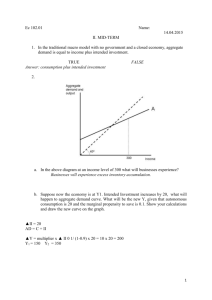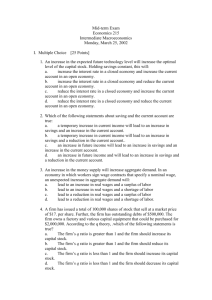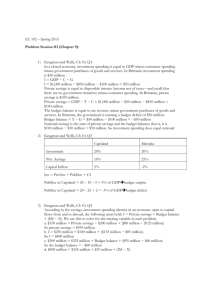lecture 09: the open economy
advertisement
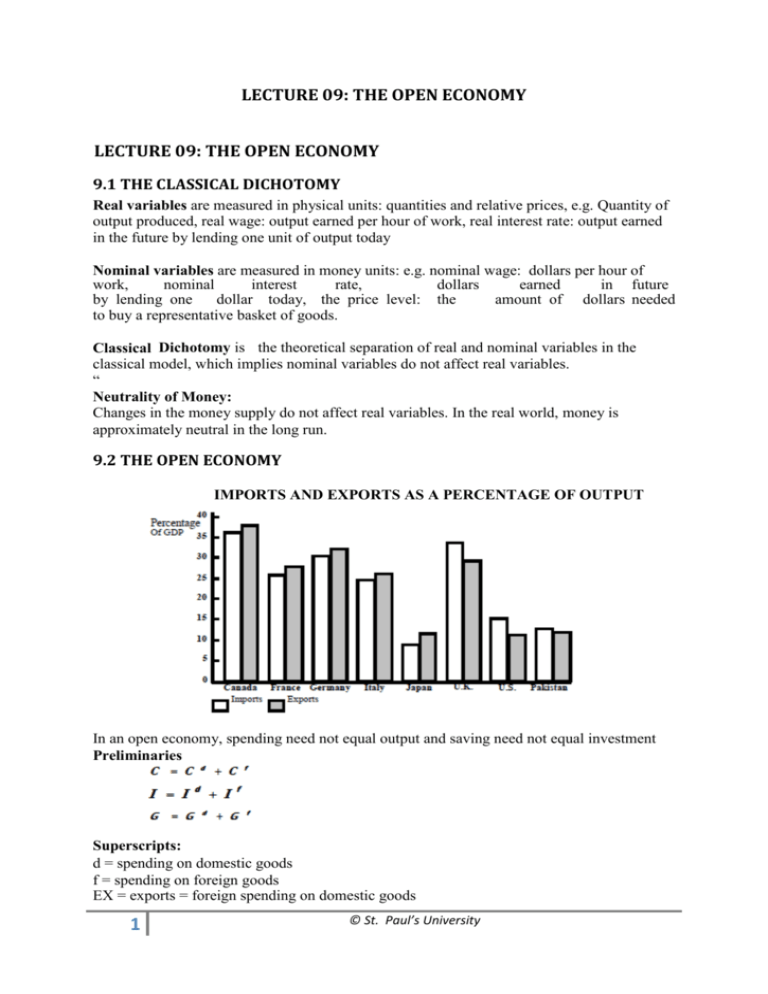
LECTURE 09: THE OPEN ECONOMY LECTURE 09: THE OPEN ECONOMY 9.1 THE CLASSICAL DICHOTOMY Real variables are measured in physical units: quantities and relative prices, e.g. Quantity of output produced, real wage: output earned per hour of work, real interest rate: output earned in the future by lending one unit of output today Nominal variables are measured in money units: e.g. nominal wage: dollars per hour of work, nominal interest rate, dollars earned in future by lending one dollar today, the price level: the amount of dollars needed to buy a representative basket of goods. Classical Dichotomy is the theoretical separation of real and nominal variables in the classical model, which implies nominal variables do not affect real variables. “ Neutrality of Money: Changes in the money supply do not affect real variables. In the real world, money is approximately neutral in the long run. 9.2 THE OPEN ECONOMY IMPORTS AND EXPORTS AS A PERCENTAGE OF OUTPUT In an open economy, spending need not equal output and saving need not equal investment Preliminaries Superscripts: d = spending on domestic goods f = spending on foreign goods EX = exports = foreign spending on domestic goods 1 © St. Paul’s University IM = imports = C f + I f + G f = spending on foreign goods NX = net exports (the “trade balance”) = EX – IM If NX > 0, country has a trade surplus equal to NX and If NX < 0, country has a trade deficit equal to – NX. GDP = Expenditure on domestically produced goods &services 9.3 THE NATIONAL INCOME IDENTITY IN AN OPEN ECONOMY Y = C + I + G + NX or NX = Y – (C + I + G) Where, NX => Net Export, Y => Output, C + I + G => Domestic Spending 9.4 NET FOREIGN INVESTMENT AND TRADE BALANCE We have Y = C + I + G + NX Re-arranging; Y – C – G = I + NX, Recall, Y – C – G is national savings S, which is the sum of private savings (Y – T – C) and public savings (T – G). Hence; S = I + NX Or S – I = NX S – I is the difference between domestic saving and domestic investment, referred to as Net Foreign Investment. While NX is the Trade Balance. So, Net Foreign Investment = Trade Balance S – I = NX 9.5 INTERNATIONAL CAPITAL FLOWS Net capital outflows =S – I =net outflow of “loanable funds” =net purchases of foreign assets Net capital outflows The country’s purchases of foreign assets minus foreign purchases of domestic assets. When S > I, country is a net lender, when S < I, country is a net borrower. An open-economy version of the loanable funds model includes many of the same elements. 2 © St. Paul’s University 9.6 SAVING AND INVESTMENT IN A SMALL OPEN ECONOMY Assumptions: Capital Flows • Domestic & foreign bonds are perfect substitutes. • Perfect capital mobility: no restrictions on international trade in assets, Economy is small: cannot affect the world interest rate, denoted r*. 3 © St. Paul’s University The interest rate would adjust to equate investment and saving: 4 © St. Paul’s University
